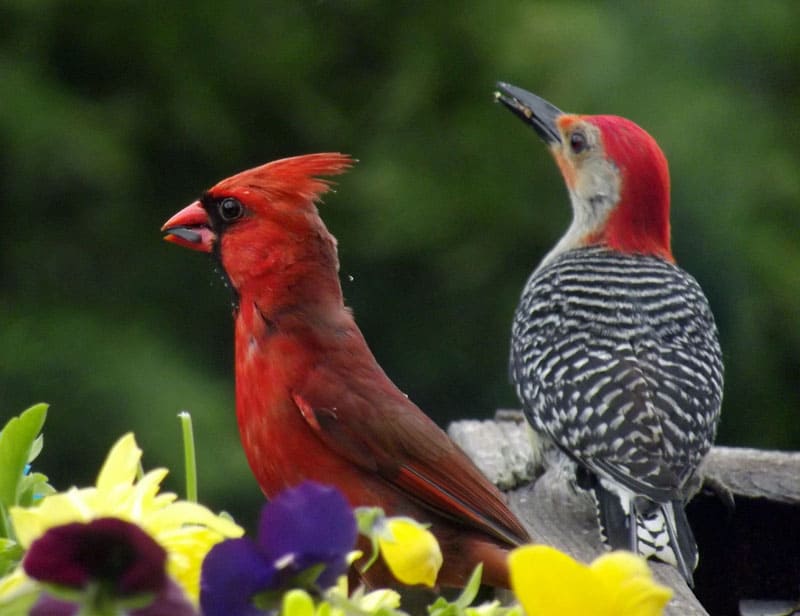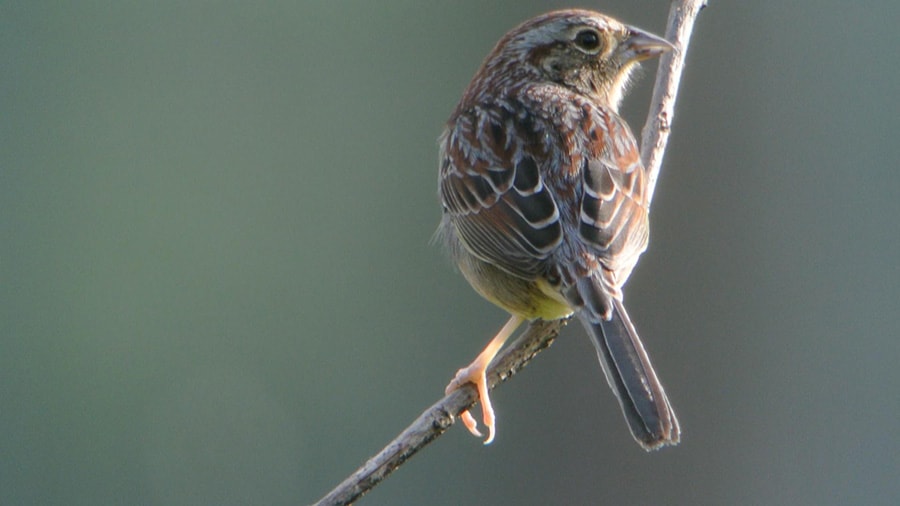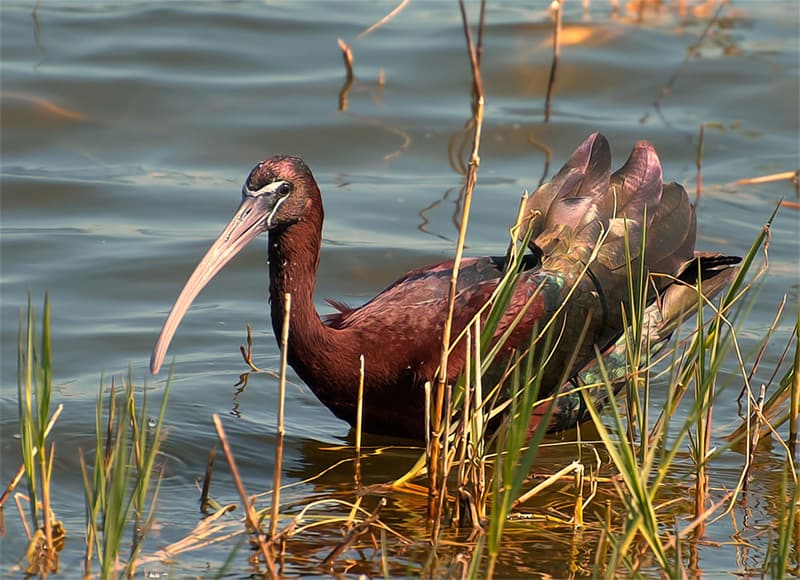Ohio’s official promotional slogan (the one on our license plates) is “Ohio: The Heart of it All!” In many ways this is also an accurate description of The Buckeye State’s birdlife because Ohio has recorded more than 412 bird species on its official list. Of these 400-plus bird species, nearly 300 are considered to be regularly occurring in Ohio, meaning that they make annual appearances either as year-round resident species, as breeding birds, or as seasonal migrants that are just passing through. Ohio is ideally situated for hosting migrating birds. It rests on the eastern edge of the Mississippi Flyway and on the western edge of the Atlantic Flyway.
The Ohio Breeding Bird Atlas, completed in 1984, confirms that Ohio enjoys a rich diversity of birds. More than 190 birds were documented as probable breeders within Ohio, and 182 of these species were confirmed as breeding here. In addition to these breeding species, many of which are with us for only the spring and summer breeding season, Ohio bird watchers are treated to a vast array of migrant birds each spring and fall—warblers, vireos, thrushes, ducks, geese, hawks, and owls that breed to the north of our state. Websites, birding hotlines, and bird club gatherings buzz with excitement as the sightings of arriving migrants are shared among bird watchers in both spring and fall. And thousands of bird watchers take to the fields, woods, lakes, parks, hills, and hollows of Ohio seeking these feathered wonders of nature. Winter visitors to Ohio, including sparrows, finches, raptors, owls, and waterfowl, keep things exciting for Ohio bird watchers during the colder months.
It is appropriate that Ohio’s state bird is the northern cardinal because this colorful songster is a year-round resident and a familiar favorite at Ohio’s backyard bird feeders. Bird feeding is, after gardening, the backyard hobby most avidly pursued by millions of Ohioans. Year-round resident birds that are regular at Ohio’s bird feeders include Carolina chickadee (in the southern half of the state) and black-capped chickadee (in northern Ohio), tufted titmouse, white-breasted nuthatch, downy, hairy, and red-bellied woodpecker, song and chipping sparrows, American goldfinch, house and purple finch, and eastern towhee.
In winter the activity at feeders will be augmented by the presence of many winter visitors, including dark-eyed junco, white-throated, white-crowned, fox, and tree sparrows, and in some winters, common redpoll, evening grosbeak, pine siskin, and perhaps red or white-winged crossbills.
Summertime feeding always involves ruby-throated hummingbirds, the only hummingbird that breeds in Ohio, coming to flowering plants and nectar feeders. Orioles and tanagers will dine on oranges halves placed out for their benefit. And summer is also the season when Ohio’s bird watchers are landlords to chickadees, titmice, tree swallows, purple martins, wood ducks, screech-owls, and the beloved eastern bluebird. Proper housing located in appropriate habitat is just one way that we enjoy helping our state’s cavity-nesting birds.
History of Bird Watching in Ohio
The history of Ohio and its birds are deeply intertwined. Ohio’s native peoples held a deep connection with the region’s birdlife, weaving birds into their culture, religion, and sustenance. The Great Serpent Mound in south central Ohio, created by the prehistoric people called the Moundbuilders, depicts a coiled snake swallowing a bird’s egg. In the time prior to European settlement of Ohio, accounts of early travelers refer to great clouds of birds darkening the sky with their wings and shaking the trees with their calls.
Many of the giants of natural history have come to Ohio to study our birds and wildlife. John James Audubon made many trips down the Ohio River. In the early 1800s Audubon was the operator of a general store in Kentucky, but he was so absorbed with studying the birds of the region that his business quickly went bankrupt. Lewis and Clark stopped in several Ohio River towns on their famed expedition to the West. Modern ornithology has benefited greatly from Ohio’s birds and bird watchers, too. Margaret Morse Nice, a pioneer among female ornithologists, conducted groundbreaking studies of the song sparrow in her Columbus backyard. She set the standard that Ohio’s citizen-scientists continue to this day by participating in field work and bird counts such as the Christmas Bird Count, Breeding Bird Survey, and other important bird-data collection activities.
Some of the birds that once occurred in Ohio are now, sadly, gone forever. Passenger pigeon flocks numbering in the millions were most likely the birds “darkening the skies” two centuries ago. The species is now extinct, the last passenger pigeon “Martha” died at the Cincinnati Zoo in 1914. Ivory-billed woodpecker and Carolina parakeet are two other now-extinct birds that once called Ohio home. Several others birds dwindled and disappeared from Ohio after the forests and prairies were reduced by settlement, including greater prairie-chicken, common raven, Bachman’s sparrow, and peregrine falcon. Thanks to conservation efforts some species have made remarkable comebacks in Ohio. These “comeback kids” include the bald eagle, eastern bluebird, sandhill crane, and wild turkey. Still, habitat loss, changes in land use, predation, and the hazards of migration have reduced many bird populations significantly. Cerulean warbler, piping plover, northern bobwhite, and wood thrush are a few of the species of special conservation concern. With monitoring and diligent preservation efforts, these species and all of Ohio’s birds may continue to thrive for generations to come.
Bird Habitat in Ohio
It is the range of habitat types that makes Ohio such a “birdy” state. From the bounty of Lake Erie along Ohio’s northern border, to the prairie-like terrain of western Ohio, and the unglaciated hills and woodlands of southern Ohio, bordered by the mighty Ohio River, the Buckeye State might just as accurately be called the Birding State. Waterbirds galore can be found along Lake Erie at all seasons but the fall and winter congregations of ducks, geese, and gulls are what excite birders most. In spring Lake Erie’s expanse of water acts as a speed bump for migrant birds. In wooded habitat all along the lake’s southern shore migrants hesitate before crossing, giving bird watchers a chance to see as many as 25 warbler species in one spot, plus countless orioles, tanagers, vireos, swallows, sparrows, and more.
Western Ohio was once a vast prairie and wetland habitat, the eastern edge of the Great Plains. Much of this land was drained and tilled, but the patches that remain intact are filled with an array of grassland-specific species including such sought-after species as Henslow’s sparrow, horned lark, northern bobwhite, and dickcissel.
Woodland warblers make southeastern Ohio appealing for birders, and at least 17 warbler species breed in this mostly forested part of the state. The Ohio River also adds to the area’s birding allure. It acts as a migration corridor in both spring and fall and supports large flocks of wintering waterfowl and an increasing population of wintering bald eagles.
Southern Ohio is home to several bird species that are more commonly found in the South, including blue grosbeak, black vulture, chuck-will’s-widow, and summer tanager.




